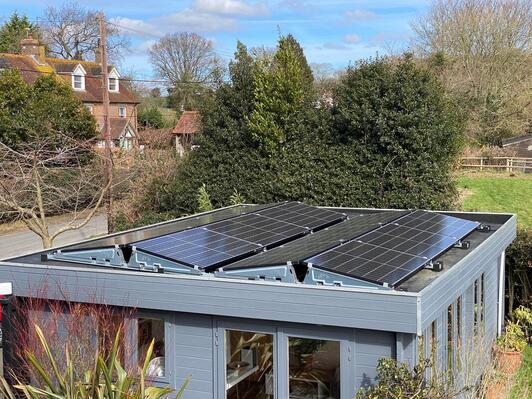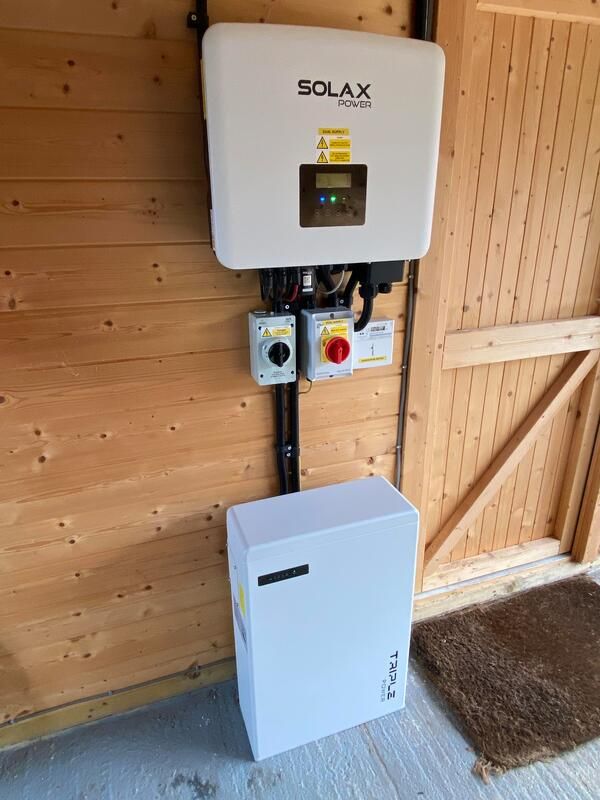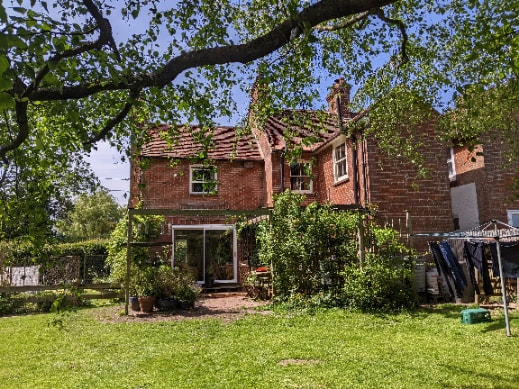|
In this blog post, David Nash, describes his experience of installing a solar panel array at his home in Gun Hill... Like the majority of households in Chiddingly Parish, we have to rely on oil for our hot water and central heating. In the medium term, we intend to install either a ground- or air-sourced heat-pump to lower our carbon footprint, but this is beyond our current budget. Instead, as a first step towards “greening” our energy supply, we decided to investigate solar. I thought it might be helpful to share our experience to assist anyone considering installing their own solar array. We started our journey in the summer of 2022 – coincidentally the hottest summer on record in the UK and when energy prices were soaring due to the war in Ukraine. Seemingly everyone with a bit of spare cash was looking to install solar. We wanted to use local suppliers, and contacted half a dozen renewables companies in East Sussex. Those that replied – three didn’t even bother – explained that demand was high and there was a shortage of panels and batteries. In short, there would be a long lead-in time. However, this wasn’t a big deal to us as we were in no rush. Rather than having solar panels installed on the roof of the house, we wanted to have an array set up on our garage roof, with a battery system in the garage itself. This has advantages in that the panels are less visible from the road. Also, unlike solar panels mounted on a fixed-aspect sloping roof, the panels catch the sun all day round. Installing solar on an out-building does, of course, raise some challenges. For starters, you need a fair bit of electrical work and additional cabling to get the solar-generated power into the house. We had power in the garage, but the cable from the house was inadequate for the additional electricity transfer. Panel systems for flat roofs are also heavy. The panels are mounted on a metal frame and held down by ballast, so we needed a structural engineer to confirm that the garage wasn’t going to collapse.
The company we eventually selected was able to assess our initial requirements, including estimating the number of solar panels we needed and the payback time, using online tools such as Google Earth. Two site visits were needed to determine the electrical connection work. Installation of the 4.2 kWh solar array (in February 2023) was relatively quick. The frame and 12 solar panels were set up within a day, but the electrical work took a bit longer. In addition to an inverter (which converts DC power from the solar panels into AC) and 5.8 kW battery, we needed a new fuse box in the garage, new cabling to the house and a new junction box on the wall above our current meter box. While we were doing the work, we had an electric vehicle charging point installed, so we also needed a new earth point.
All this electrical work took about five days. However, I’m now typing this on a laptop powered entirely by the Sun. It is a bright but cloudy day in early Spring, and we are generating enough solar energy to power a washing machine, iron, kettle and background electricals (fridge-freezer etc.), top up the battery and feed excess power back into the grid. We have an app connected wirelessly to the inverter that shows the solar power being generated, what we are using at any given time, the electricity stored in the battery, the energy going back into the grid, and the amount of money (and kilograms of carbon) we have saved. The battery is currently 100% full. This will see us comfortably through the evening and overnight, but we might draw a little mains power at breakfast time. I’m sure that the novelty will wear off in time, but I am now solar-obsessed! Based on our experience, solar is definitely worth exploring as part of your domestic energy mix. Energy prices are likely to remain high for some time, and we all need to reduce our carbon emissions. Once your system is set up, you will benefit from solar power immediately. Note that there is a little paperwork required to register for the Smart Export Guarantee, so that you can feed excess generated power into the grid, but your supplier can explain this. You will also need a smart meter installed – we already had one so this wasn’t an issue. If you want to talk about our experience and/or arrange a visit to look at the panels and battery set-up, just email [email protected].
3 Comments
Mike Goss, a long-term resident of Thunder's Hill, writes about his experiences of trying to 'green' his domestic energy supply... For years, we have run our house with a twin-burner oil-fired Rayburn – one burner for cooking, and one for heating and hot water. The Rayburn reached the end of its life earlier this year, and the cooking burner was condemned and switched off.
OK, we thought, now is the time to go green. We considered an air-source heat-pump. The companies specialising in heat-pumps (or their sales representatives at least) were very gung-ho and thought that our house – Victorian end of terrace, with some cavity wall insulation and good loft insulation – was entirely suitable. Then the quotes started coming in. The heat pump itself was not too expensive (and you can get generous grants under the new Boiler Upgrade Scheme), but we also needed a new hot water tank, and new radiators, and possibly completely new central heating pipework as well. A heat pump can supply as much heat as an oil-fired boiler, but at a lower temperature, so to get the same amount of heat out of it you need to move a lot more water around the place – hence larger radiators, hot water tanks and pipework. We explored going for a mix of solar and mains electric, with solar panels on the roof to mitigate some of the extra electricity costs (you can get grants for this too). This plan seemed eminently possible, but then the electrical engineer asked the question – what will you be using to cook? As we don’t have a Rayburn anymore, we replied, ‘I guess an electric cooker’. We were informed that, if you plan to draw enough current for heating and cooking, we would have needed to upgrade our power supply, fit a new mains fuse, add a new consumer unit, and do some re-wiring. Then the quotes started coming in… So, we thought, ‘let’s just replace the Rayburn’. Have you seen the cost of new Rayburn, or the lead time on a refurbished one? So, despite our best intentions, we will be going with a new external oil-fired boiler, and a new electric cooker, and some solar panels on the roof. That’s about as green as we are going to get for the time being. Our lesson from this experience is that – if you are thinking of installing a heat pump and/or solar – start early and budget carefully. Greening your domestic energy supply will save you money in the long term but requires a sizeable initial outlay. We had to act in an emergency and found it too expensive and problematic in the time we had available to us. |
Our authors
The Greening Chiddingly blog page contains short posts written by residents of Chiddingly parish on environment-themed topics. Categories
All
|
Get in touch
Email: [email protected]
|
Follow us on social media
|
Copyright on this site
Text © Greening Chiddingly (2024)
Banners © Trevor Thomas (2022) |




 RSS Feed
RSS Feed